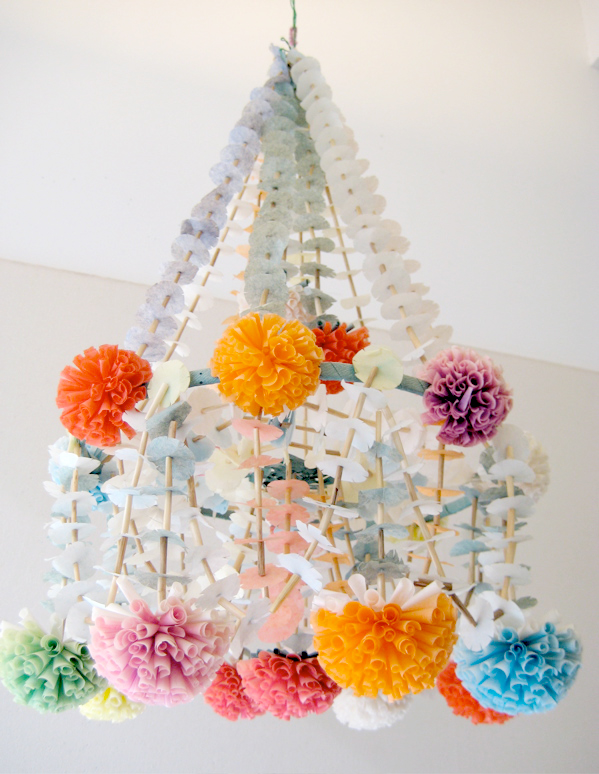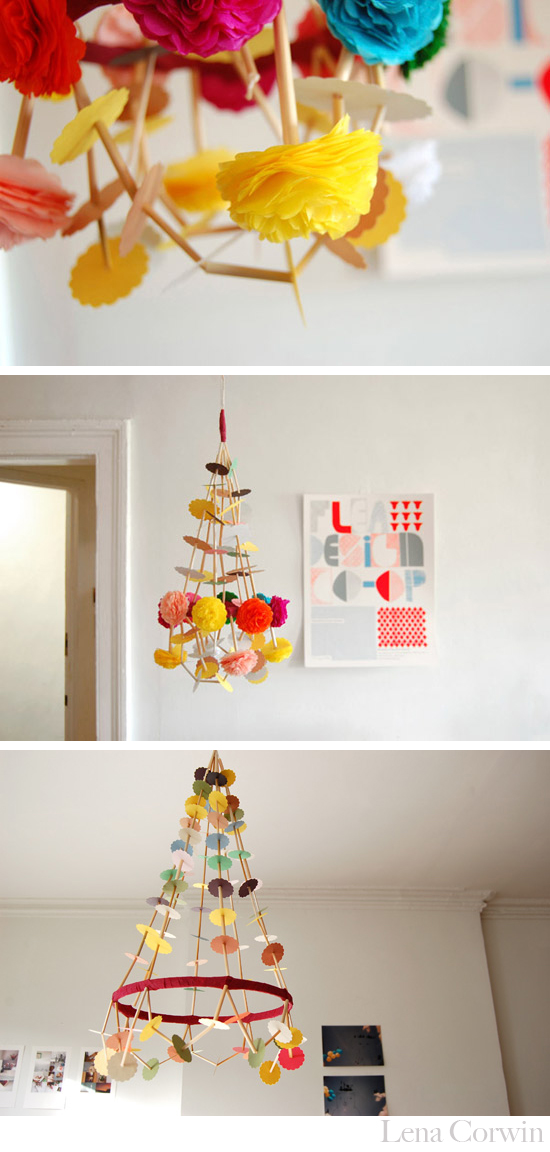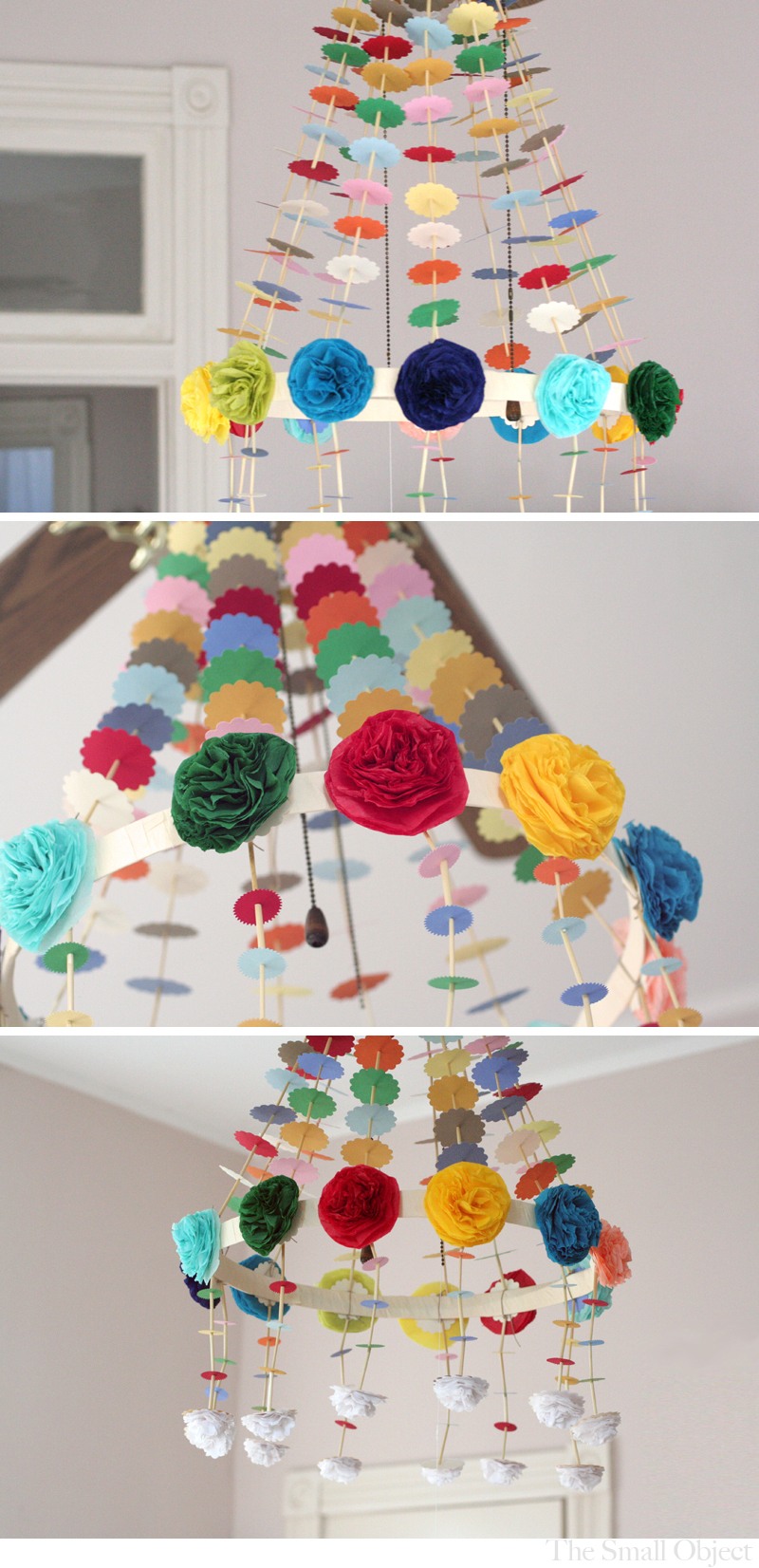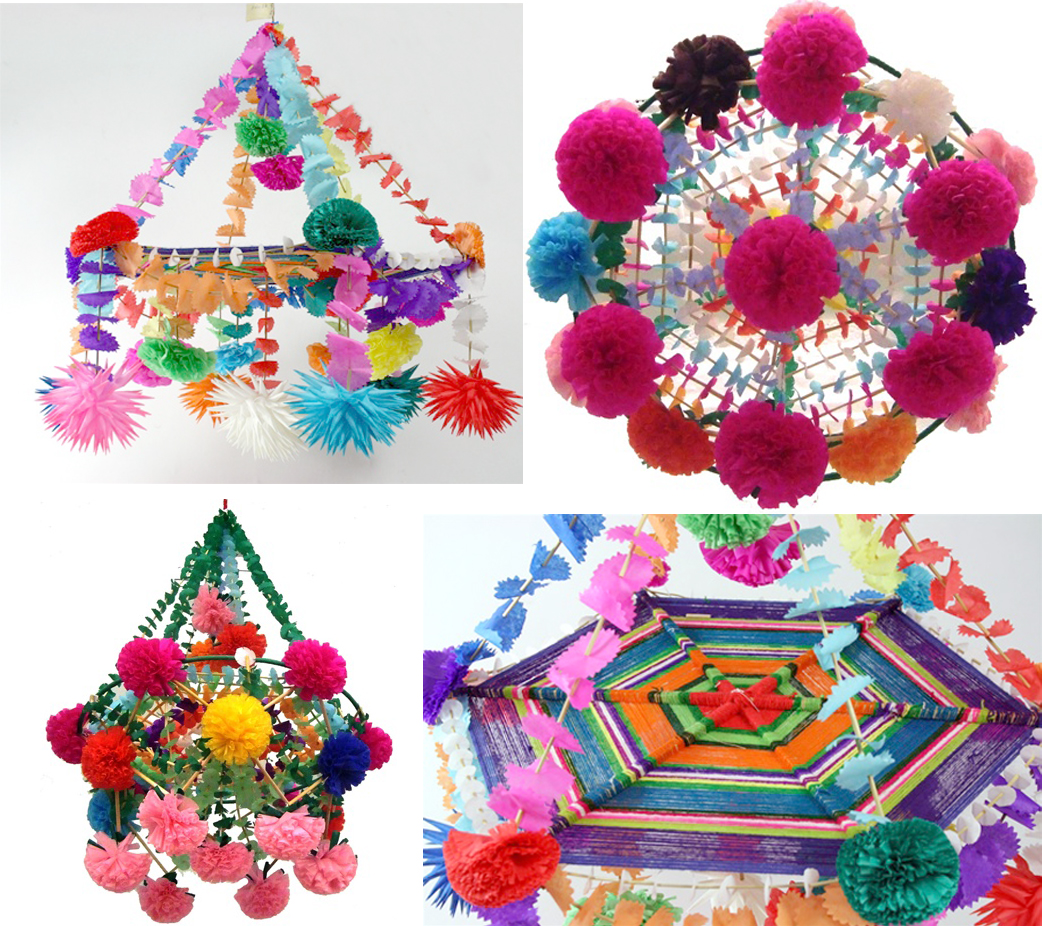Polish Paper Chandeliers
Good morning friends! Today I have a few artists to share with you, another fabulous photographer and a shop tour of a favorite blogger of mine who happens to be a seriously talented interior designer with a gorgeous shop in addition to her blog -- so stay tuned for that. First up is a little something I've been spotting around the web and they're referred to as Polish paper chandeliers, mobiles, and Pajaki. Have you also noticed these beauties?
The first time that I heard of them in the online craft community was when Laura Normandin of WREN handmade talked about them on her blog. Above is the photo that she took of one purchased at a Polish Art Center in Michigan made out of tissue paper. In Polish they seem to be called Pajaki  which translated to English means something like spiders of straw and so I'm guessing it has to do with its web-like patterning. Pajaki are typically made out of crepe paper and wool. You can learn more about them below. Want to see a few more?
which translated to English means something like spiders of straw and so I'm guessing it has to do with its web-like patterning. Pajaki are typically made out of crepe paper and wool. You can learn more about them below. Want to see a few more?
Inspired by her find, Laura tapped into her creativity and talent and made her very own paper chandelier since her husband's family is Polish and she wanted to present one as a present to his aunt. Here is Laura's translation of what she found above. Isn't it magical to view such examples of how a creative mind translates what they see into a new creation unique to them? Let's view another example of this by a second Brooklyn-based designer.
Inspired by Laura's modern translation of the Pajaki, Lena Corwin created some for a recent show that she curated. Again, another spin to the Polish paper chandelier that looks and feels uniquely Lena. But wait, I have another to share from one last artist who I found out also makes them.
This one was made by The Small Object. I'm not sure if she was inspired by the artists above, or if it was simply coincidence, but no matter... hers is stunning and very detailed, too. I especially love how she placed tiny white paper flowers at the end of each strand.
The Polish Art Center website has this to say about these beautiful works of art, "Located 90 kilometers from Warsaw the town of Lowicz and surrounding villages comprise the center of what many consider to be Poland's most colorful folk region. A typical village house from this area was full of colored flower paintings, fancy paper cut-outs and mobiles made of straw and colored paper. The mobiles or pajaki are delicate creations hand made by the women and girls of the villages as decorations for their homes. The finest examples of this folk art from the 19th and 20th centuries can be found in the local museum located in the town square. As Poland continues on the path to modernize the country the number of folk artists grows smaller. Our selection represents the finest examples of the older generation still practicing their craft." Here are a few that they sell online below in case you'd like to see more of the traditional styles. Looking up from below, you can clearly see the web-like design which better explains their name.
Aren't you feeling a bit inspired now to make one for yourself? Though the traditional ones are stunning (shown above), I feel more drawn to those made by the talented ladies I've featured here because they are a bit more modern and less ornate. What do you think? They would be beautiful for a party at home, or in a kids room or even as a window display in a shop? So festive and fun!
If you like folk art, you may also want to research the Polish paper cutout art called Wycinanki primary found in two parts of the country: Lowicz and Kurpie. It's very intricate and beautiful and much like the intricate German paper cutting design called Scherenschnitte, which I'm learning about currently as I'm fascinated by lots of the Swiss and German art of paper cutting. My aunt, before losing her to illness, was a fine artist and a Waldoff school teacher who also taught at an art school in Denmark. Having lived in Russia, South America, the U.S., Austria and Spain, she not only learned Russian and Spanish fluently, but studied art and design in these countries applying lots of traditional techniques to her work. As a child, she sent me many of her creations as gifts - and they fascinated me because I lived in South Carolina with very little exposure to the outside world in my small coastal community. The boxes that would arrive with her beautiful works inside along with pretty stamps on the packages from foreign destinations, set in me at an early age this desire to see the world and learn more about art and design. I'm saying this because if you are a mother, or an aunt, or anyone who has the chance to influence a child -- I strongly encourage you to share things with them things that aren't necessarily mainstream craft -- share what they're not exposed to on a daily basis because I believe this inspired curiosity in me and helped to develop my own creative mind further and it has made my life so rich. With my mother crafting, decorating, hanging her oil paintings all over the house, and making all of my clothing as a child I was also inspired to explore arts and crafts from a very early age by her as well.
While I'm not sure if learning about art and design and exploring the traditional works of other cultures makes you a better or even happier person, I do believe that it helps to connect us with others and can cause a greater respect and appreciation for their heritage and even their world views through their crafts (as a good part of traditional hand work stems from cultural beliefs, religious and other). This can also create sense of harmony between cultures. There is so much prejudice out there but barriers can be broken through education and understanding. Often prejudices aren't based on anything real -- just a passed down perception from peers and even family members -- and if altered somehow and one is taught more about a specific culture then prejudices can be broken. So, I guess in the end, learning about art and design does make us a little happier because when there is harmony and peace, there is joy.
(images: linked to their sources above)





